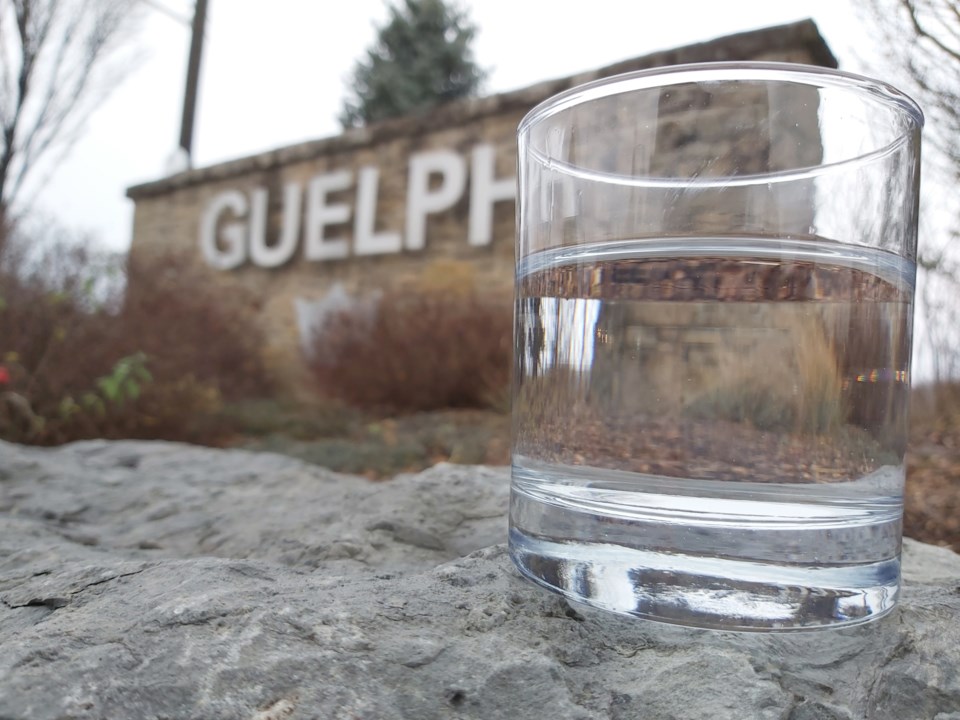While the city’s not thirsty yet, the search is on to find a greater water supply to accommodate expected growth in both population and jobs.
At the current rate, we’ll reach our max in about nine years, says Wayne Galliher, the city’s water services division manager.
“When we were provided with the first view of the new provincial growth forecast, we as staff had questions of our ability to meet the growth targets knowing that we do have a finite groundwater supply,” he told GuelphToday. “We’re at the point in our current work where we’re assessing our alternatives once again to meet both the population growth target as well as the employment growth targets.”
The provincial Places to Grow Act mandates Guelph grow by about 60,000 residents in the next 30 years, reaching 203,000 by 2051. The city is also required to accommodate 34,000 new jobs, up from the current 82,250.
“We’re optimistic that our plans include enough new supply to meet demand as we grow, but in the unlikely event that we determined there isn’t enough water, we would let council know the outcome of our study and get their direction on how to move ahead,” Jennifer Rose, the city’s general manager of environmental services, said of meeting growth targets.
If that were the case, she added, the city would consult with the province in an effort to find a solution.
As it stands now, the city is permitted to take 83 million litres of water per day from its 21 wells, each of which has its own daily limit. On average, city residents and businesses use about 50 million litres per day, said Galliher.
Up to 60 per cent of that comes from a well that sits just outside of city limits in Arkell, on city-owned lands.
“We may operate a different series of wells at different times,” explained Galliher.
“These are all largely connected in some way,” he continued. “We have a fractured bedrock base to our aquifer, where we take all our water from, meaning those connections may not be as apparent – fractures in rock at separate levels may be how water is transferred between the taking sites.”
The search for more water isn’t new. City council launched the search for new water supplies in 2003 and approved its first water supply master plan in 2007, followed by a revised version in 2014, with new supply added along the way, including increased taking from the Arkell well.
“That, however, did take a lot of study, a lot of monitoring and about 10 years,” Galliher said.
Efforts are underway now to complete work on a new master plan, expected to be presented to council for consideration during the second quarter of next year.
“That plan will come to reaffirm our approach, or not, and come to define the preferred alternatives as far as next steps in developing new water for our community, and the costs,” said Galliher. “It’s important to have a number of initiatives on the go at the same time just to ensure the opportunities that are present, we are acting upon.”
Those projects, each funded entirely by development charges, include following up on initial investigations of a well at the south end, in the Hanlon Creek Business Park area.
“It did look promising,” Galliher said of a recent 30-day pump test.
Next year will also see the development of a treatment plant on the city’s Clythe well, located in the northeast section of the city, which began operating in the 1960s, but was taken offline in 1999 in response to complaints about the taste and smell.
“That well itself has naturally-occurring sulfur present, as well as iron. We’re really looking at treatment to address those aesthetic concerns to the water,” Galliher explained. “That will be a new source that we will ideally look to bring on in ‘22 if not ‘23.”
Testing is also planned for a city-owned well on land in Guelph/Eramosa Township, known as the Logan well.
“There are some structural upgrades needed to that well, which are ongoing at this time,” he said, noting that work will be followed by a 30-day pumping test and monitoring. “Should that be positive, the outcome of that feasibility study, we would then look to initiate an environmental assessment, much like the Guelph South project.”
As part of regular monitoring and water quality testing, the city re-evaluates its wells to determine both the impacts of its water-taking and whether there’s enough supply to take more.
Water conservation efforts are also part of the plan.
“When people use less water, it frees up current supply,” said Rose. “With continual improvements in water-using appliances and fixtures from low-flush toilets to efficient washing machines for clothes and dishes, we’re seeing a lot of conservation happen naturally as people upgrade fixtures and appliances.
“New homes are built with these improvements and automatically use less water than older ones. “
Provincially mandated growth figures for the city were revised in 2006 as a result of water supply and water treatment capacity limitations, which factor into growth projections.
Those concerns have been renewed following the release of the latest growth targets this past August.
The city’s wastewater flows into the Speed River, once treated.
“The rate and amount of what we can flow into the river is limited by the size of the river, but … wastewater has technology improvements too, and we have capacity for growth,” said Rose.
